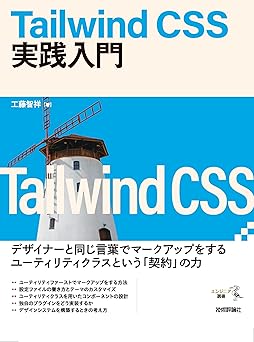バリアント修飾子「Group」
groupなるもの
実装例↓
タスク1
コード↓
<div className="space-y-4">
<div className="bg-white shadow-sm rounded-sm border border-slate-200 p-4 group/card">
<div className="flex gap-2">
<div>タスク1</div>
<div className="group/actions">
<a
href="#"
className="opacity-0 text-slate-500 group-hover/card:opacity-75 group-hover/actions:text-indigo-700 group-hover/actions:underline"
>
編集する
</a>
</div>
</div>
</div>
</div>
group/card がセット、 group-hover/card:[スタイリング]で可能
jsいらずで色々できそうか
兄弟状態に基づくスタイル設定
<fieldset className="">
<legend>Published status</legend>
<input
id="draft"
className="peer/draft"
type="radio"
name="status"
defaultChecked
/>
<label htmlFor="draft" className="peer-checked/draft:text-sky-500">
Draft
</label>
<input
id="published"
className="peer/published"
type="radio"
name="status"
/>
<label
htmlFor="published"
className="peer-checked/published:text-sky-500"
>
Published
</label>
<div className="hidden peer-checked/draft:block">
Drafts are only visible to administrators.
</div>
<div className="hidden peer-checked/published:block">
Your post will be publicly visible on your site.
</div>
</fieldset>
Groupの兄弟要素版ってだけ。記述の仕方も同じ。
注意点としては、peer/[]で定義する前にpeer-hover/[]:[style]としても動かない
疑似要素
その1 before after
学び ringってoutlineのことっぽい
その2 content
when you look annoyed all the time, people think that you're busy.
when you look annoyed all the time, people think that you're busy.
↑疑似要素じゃなくて、空要素で装飾したほうがいいんじゃね?って公式がいってる
便利ライブラリ
「clsx」
2025/1/1
ユーティリティファーストについて
メリット
- クラス名を考える必要なし
- HTMLとCSSを交互に見る必要がない
- 影響範囲が明確
プラグイン
- Typography
- 親に「.prose」である程度スタイリングしてくれる
- Forms
- ある程度のフォームの見た目を提供
- Container Queries
- コンテナクエリが簡単に使えるように
Tailwindにはいくつものプラグインが組み込まれている。ユーティリティクラスはプラグインによって実装されている
最初から組み込まれているものをコアプラグインと呼ぶ
ディレクティブ
Tailwindが独自で定義しているCSS記法のうち、アットルールを指す
- @layer
- @layer componentsは、スタイルを名前空間にまとめるためのものです。
... @tailwind utilities; @layer components { .super-button{} }.super-button {}利点は
1,utilitiesの前に書かれたことになり、上書きできる
2,モディファイアを利用できる 例)md:super-button
- @apply
非推奨。故に詳しく書かないが、どうしてもコアプラグインスタイルでコンポーネントを追加したい場合
const plugin = require('tailwindcss/plugin') module.exports = { // ... plugins: [ plugin(function ({ addComponents, theme }) { addComponents({ '.card': { backgroundColor: theme('colors.white'), borderRadius: theme('borderRadius.lg'), padding: theme('spacing.6'), boxShadow: theme('boxShadow.xl'), } }) }) ] }
- @config
設定ファイルをプロジェクト内に複数設置する場合 公式参照
- theme()やscreen()
.btn-blue { background-color: theme(colors.blue.500); @media screen(sm) { background-color: theme(colors.red.500); } }
Preflight
Tailwindにおいてクラスを用いずに表現されるスタイル郡。リセットCSS的なやつ。
ダークモード対応
- osの設定に準じる(prefers-color-scheme)(darkMode: 'media')
- セレクタやクラスを元に判断する(darkMode: 'selector')
組み方
classNames clsx でpropsにclassNameを渡すのは微妙
あとから上書きされたりするのが面倒
どうしてもというときはtailwind-mergeを使う
コンポーネント集
- TailwindUI
- shadcn/ui (tailwind css + Radix UI)
- Headless UI (スタイリングを持たないUIライブラリ)
- Radix UI
設定ファイルの高度な設定
- safelist
- ビルド結果に強制的に含まれるクラスを指定
- blocklist
- safelistと逆に消すべきクラスを定義
- prefix
- 接頭辞を指定できる
- presets
 Tailwind CSS 実践入門をよんでます
Tailwind CSS 実践入門をよんでます